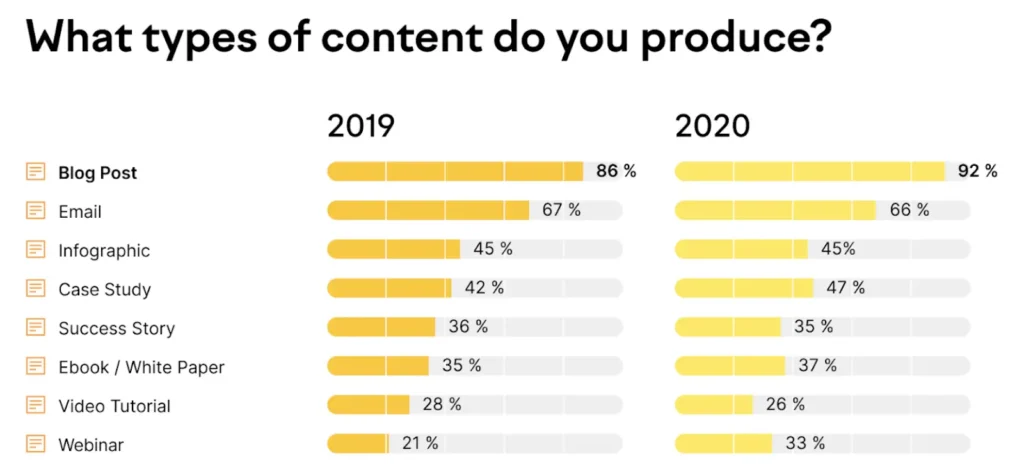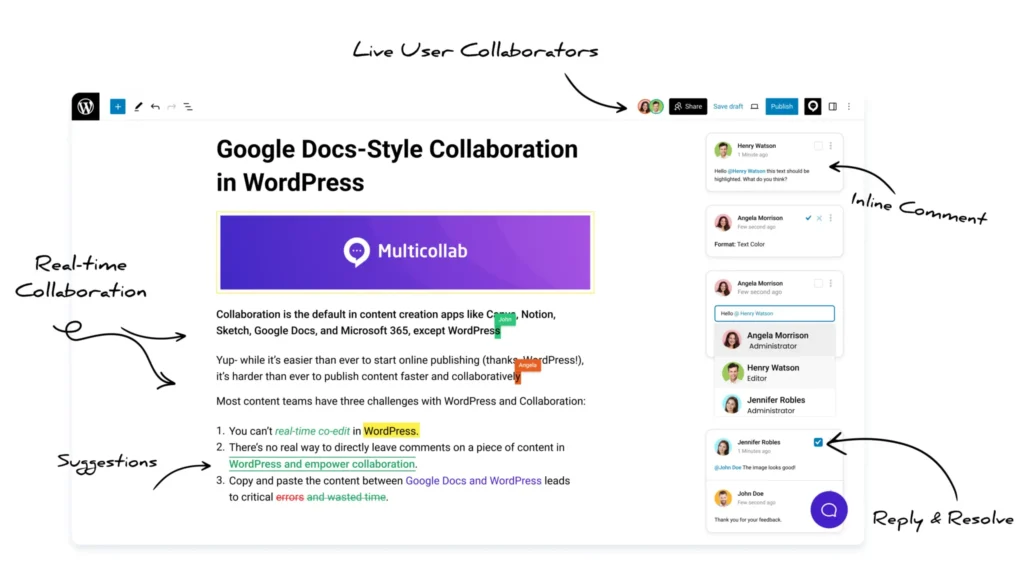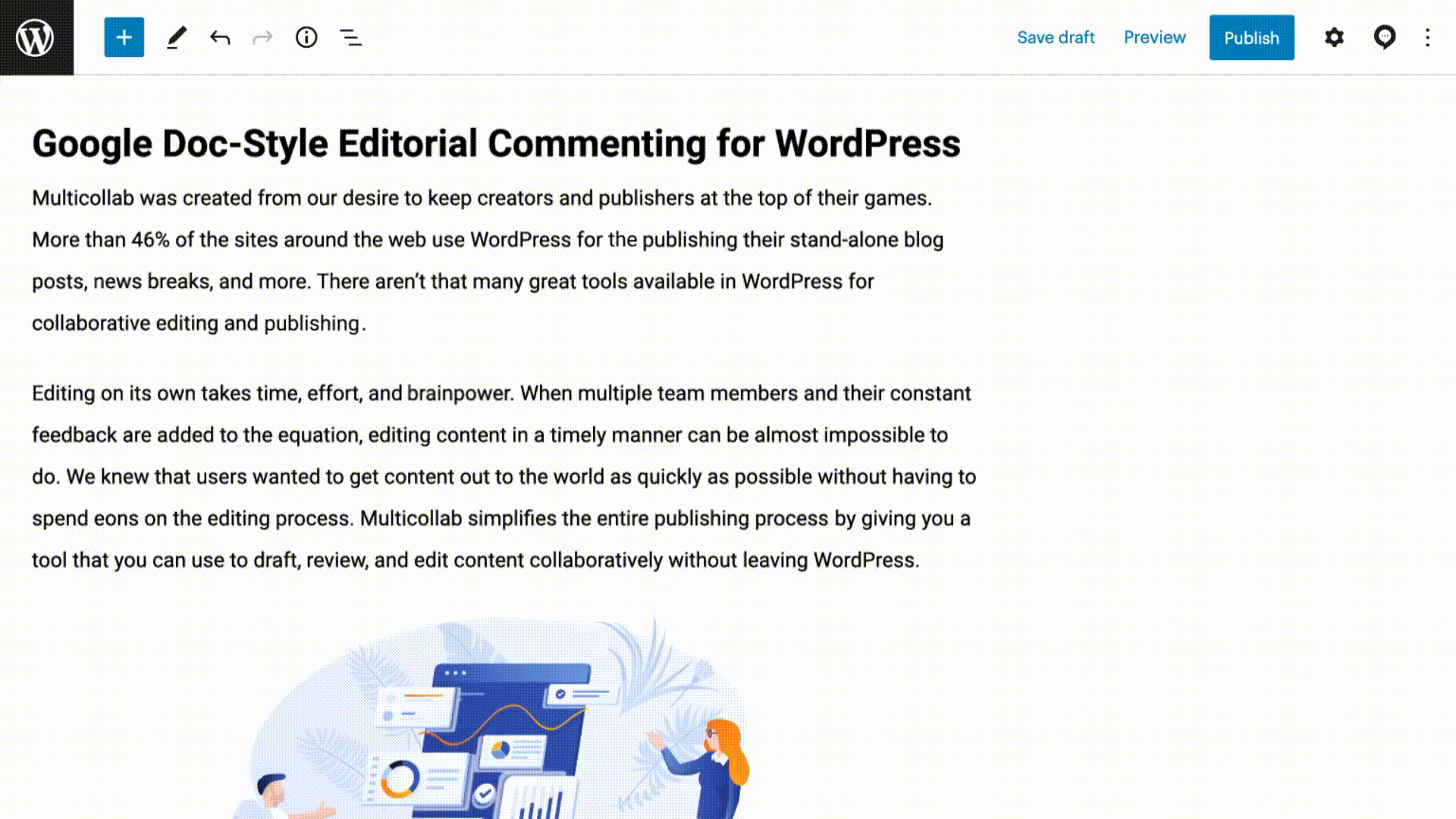Table of Contents
An editorial strategy is a plan of action that facilitates the creation, publishing, and distribution of content to achieve business goals like getting more website traffic, collecting more leads, and making more sales. Also referred to as the editorial content strategy, it consists of the workflow and the tools that run it.
An editorial strategy plays a crucial role in building your authority in your domain and earning the trust of your target audience by delivering them value through content. On a tactical level, an editorial content strategy helps with the following:
- It helps you produce quality content faster.
- You will get the most out of your tools and workflows.
- It helps your team collaborate more efficiently.
- You will reach your business goals faster.
However, building an editorial content strategy is easier said than done. You have to consider various factors such as available resources, organizational goals, etc., before outlining the workflow, which can be tough, especially for small businesses.
What is an editorial Strategy?
An editorial strategy is a plan that directs content creation, curation, and distribution for a publication or brand. It defines goals, target audience, voice, and themes to ensure consistency and alignment with organizational objectives.
A simple editorial strategy example is when you self-reviewed your essays back in high school or college. Even though it did not involve multiple collaborators or tools, it served a similar purpose — improving the content and making it more purposeful.
In this article, you’ll learn six steps that you can follow to build an editorial strategy template that is tailored to your business.
How to build an editorial strategy template?
Identify your target audience
From a broader perspective, your editorial content strategy is a means to help you serve your target audience better, whether it is educating them about new trends or sharing actionable tips that will help them run their business better.
Unsurprisingly, the first step is all about understanding the pain points and expectations of your target audience. Usually, it involves critically analyzing how much a problem is affecting them and what they are currently doing about it.
This also provides you with an opportunity to look at the present solutions or your competitors’ value propositions. You can conduct surveys and market research to collect data which will also help you in generating content ideas down the line.
The operational activities of this step are different for each team and company as they depend on factors such as the nature of the industry and pricing which are unique. However, this step should be the first on your editorial strategy template.
Determine content types and channels
Blog posts, guides, eBooks, and case studies are some content types that you can produce through your editorial strategy to deliver value to your audience. In this step, you have to determine which content type is ideal for you and how you would distribute it.
The most popular content type is blog posts as they are easy to create, publish, and share as compared to others. On top of that, they exist on your website — a platform that you control.

Even though you have to play by the rules of search engines, you can create blog posts on almost any topic that ties your brand with your audience. Blog posts produced via an efficient editorial content strategy can drive tremendous value to your audience and be shared through various means such as newsletters, social media, and links.
Set content and campaign goals
At this step, you need to assess where you are as a brand and what your next goal is. For instance, if you are just starting out, your objective should be improving your authority and raising brand awareness.
Based on your current organizational needs, you need to set goals for your content and content marketing campaign. This will help you align your editorial strategy with your company’s vision and business objectives in the short and long term.
After identifying your goals qualitatively, you must recognize measurable parameters or key performance indicators (KPIs) to ensure your editorial content strategy is on the right track. Domain ranking, organic traffic, leads/month, etc., are some parameters that you can start with.
It will help you immensely if you set goals based on these KPIs. For example, if you set a goal of doubling your monthly organic traffic, it will become quite easier for you and your team to monitor your progress.
Create the editorial calendar
An editorial calendar tracks what happens when. It is crucial to ensure that the right content gets published before the deadline. It also helps run the editorial workflow by constantly guiding the content team about their daily tasks.
While creating an editorial calendar, it is important to take everyone’s opinions into account as it will affect how accurately it will be followed. Be mindful of scheduling posts based on your team’s capabilities, strengths, and requirements.
Resist the urge to copy your competitors’ blog post production volume, for instance, as their business functions are different from yours. Customization is a key component of building an editorial strategy which is reflected on your editorial calendar.
Assign roles and responsibilities
Authors, editors, reviewers, managers, etc., contribute to the content at different phases of the content production and collaboration workflow. For the smooth execution of the whole process, it is crucial for you to ensure that everyone is aware of their roles and responsibilities.
There are many approaches to doing this. The simplest one is you can make your team members aware of their responsibilities and your expectations of them in the editorial strategy when they join your company.
Another way you can do this is by explaining who will do what while outlining the editorial strategy template. This will allow you to answer any questions that might emerge and get their feedback to improve the overall process.
Adopt the right tools
The last step of creating a kickass editorial strategy is choosing the right tools. It doesn’t mean going with the most popular or even the priciest ones. It is about choosing the tools that your team is comfortable with and that will help you achieve your business goals fast.
The editorial process of most content teams occurs in third-party content editing tools such as Google Docs and Microsoft Word. After the draft is approved, it is moved to a publishing platform, such as WordPress, for publication.
Although most teams have accepted that editorial workflow, they do come with some problems that slow down the entire process and affect the content quality.
For instance, the back and forth of content between Google Docs and WordPress editor, sharing feedback on dynamic content such as CTA blocks, and giving unrestricted access to your company data to external teams are some challenges that most teams deal with all the time.
Fortunately, there is a tool that solves it all.
Multicollab is an editorial collaboration plugin that enables Google Docs-style commenting in the WordPress Gutenberg Editor. This allows content teams to share feedback on their drafts through inline commenting and tagging others.

Furthermore, since your editorial process takes place on the Gutenberg Editor, you can share feedback on dynamic content such as CTA blocks, image carousels, etc.

And finally, you won’t have to share your folders and files with external collaborators and clients during the review phase. Collaborators can join you on WordPress through Multicollab where you control what they can do while sharing their feedback.
The above functionalities of Multicollab make it a must-have tool for the successful execution of an efficient editorial strategy.
Conclusion
An editorial strategy is a plan of action that enables you to publish and distribute purposeful content that delivers value to your audience. Every content team and/or company needs unique editorial strategies since so are their requirements and constraints.
However, the general editorial strategy template remains quite similar.
To build one, you need to understand the needs of your audience, determine the type of content you want to publish and the channels that will get them to your readers, define your campaign goals based on the company’s vision, build an editorial calendar collaboratively, ensure that everyone is aware of their responsibilities, and adopt versatile, scalable, and easy-to-use tools.
Multicollab is an editorial tool that allows you to shift your editorial process to your favorite CMS, WordPress, by enabling Google Docs-style commenting on the Gutenberg Editor. It accelerates your editorial and publishing process by 42%.
FAQs:
1. How do you create an editorial content strategy?
You can create an editorial content strategy based on your company’s vision and audience’s needs. Start by researching a topic your audience is interested in. Then create, review, edit, publish, and distribute it with the help of an efficient workflow and tools.
2. What are the 4 pillars of a robust content strategy?
Identifying goals, understanding the audience, adopting the right workflow, and determining the appropriate content format are the four steps of content strategy.
3. What are the 7 steps in creating a content strategy?
Defining your goals, data collection, deciding on your content types, creating and distributing content, SEO, and tracking relevant metrics together make up the seven steps in creating a content strategy.
4. What are the 3 components of content strategy?
Brand focus, customer experience, and distribution are three components of content strategy.






